|
Show all abstracts Show selected abstracts Add to my list |
|
| EDITORIALS |
|
|
|
Is RBC discrimination index suitable for differentiating between α- and β- thalassemias? |
p. 115 |
Ajit C Gorakshakar, Roshan B Colah
DOI:10.4103/0971-6866.92079 PMID:22345979 |
| [HTML Full text] [PDF] [Mobile Full text] [EPub] [PubMed] [Sword Plugin for Repository]Beta |
|
|
|
|
|
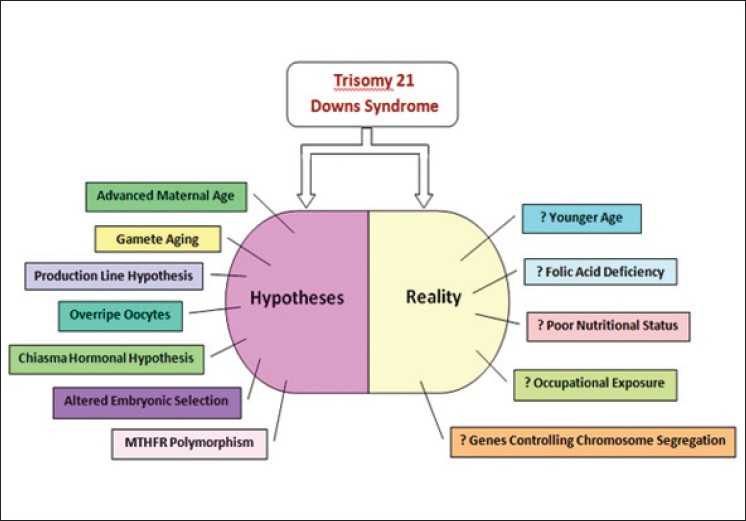  |
Incidence of down syndrome: Hypotheses and reality |
p. 117 |
Babu Rao Vundinti, Kanjaksha Ghosh
DOI:10.4103/0971-6866.92080 PMID:22345980 |
| [HTML Full text] [PDF] [Mobile Full text] [EPub] [Citations (2) ] [PubMed] [Sword Plugin for Repository]Beta |
|
|
|
|
|
|
| REVIEW ARTICLES |
 |
|
|
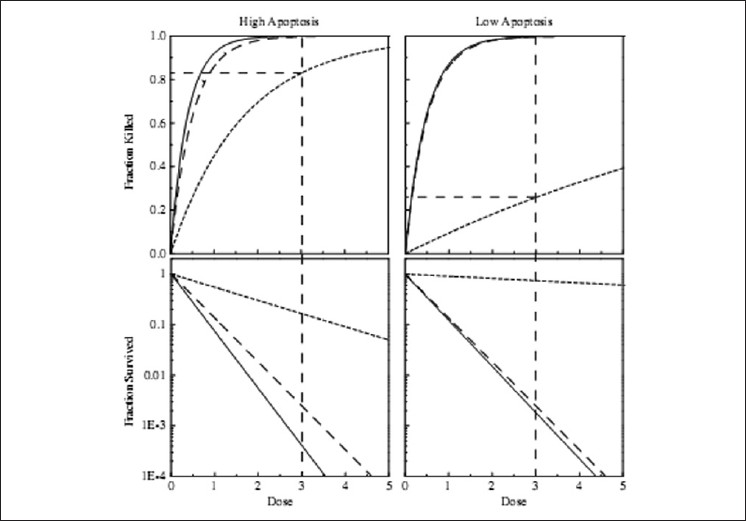  |
Apoptosis and survival |
p. 120 |
Manjul Tiwari
DOI:10.4103/0971-6866.92081 PMID:22345981The term apoptosis first appeared in the biomedical literature in 1972, to delineate a structurally distinctive mode of cell death responsible for cell loss within living tissues. The cardinal morphological features are cell shrinkage, accompanied by transient but violent bubbling and blebbing from the surface, and culminating in separation of the cell into a cluster of membrane-bounded bodies. Changes in several cell surface molecules also ensure that, in tissues, apoptotic cells are immediately recognised and phagocytosed by their neighbours. However, it is important to note that apoptosis is only one form of cell death and the particular death pathway that is the most important determinant for cancer therapy is not necessarily that which has the fastest kinetics, as is the bias in many laboratories, but rather that which displays the most sensitive dose-response relationship. |
| [ABSTRACT] [HTML Full text] [PDF] [Mobile Full text] [EPub] [PubMed] [Sword Plugin for Repository]Beta |
|
|
|
|
|
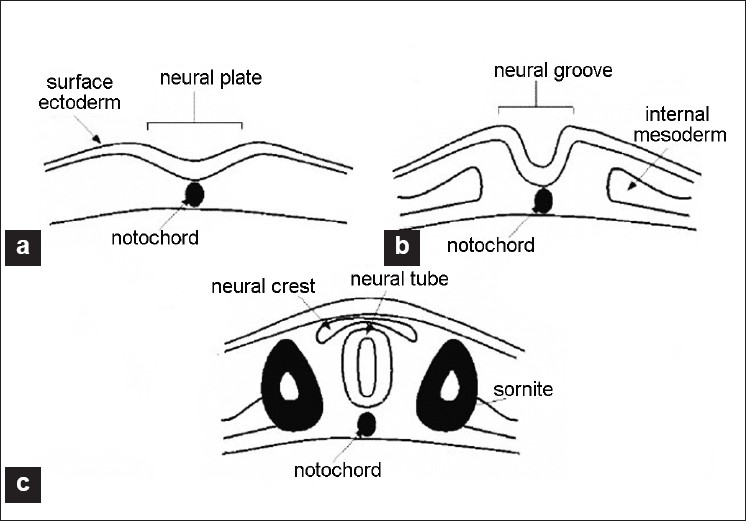  |
Neural tube defects between folate metabolism and genetics |
p. 126 |
Helmi Y Alfarra, Sabreen R Alfarra, Mai F Sadiq
DOI:10.4103/0971-6866.92082 PMID:22345982Neural tube defects (NTDs) are the second most common severely disabling human congenital defects. Worldwide, NTDs incidence is approximately one per 1000 live births and varies between 0.78 and 12 per 1000 births in general populations. NTDs causation involves multiple genes, nutritional and environmental factors. Research in the next stage should include bigger populations and bigger studies that would be suitable to detect significant links and conclusions with relatively minor risk factors; analysis of multiple candidate genes to detect potential gene-gene interactions; detailed analysis of patient samples stratified by phenotype. |
| [ABSTRACT] [HTML Full text] [PDF] [Mobile Full text] [EPub] [PubMed] [Sword Plugin for Repository]Beta |
|
|
|
|
|
|
A comprehensive review on host genetic susceptibility to human papillomavirus infection and progression to cervical cancer |
p. 132 |
Koushik Chattopadhyay
DOI:10.4103/0971-6866.92087 PMID:22345983Cervical cancer is the second most common cancer in women worldwide. This is caused by oncogenic types of human papillomavirus (HPV) infection. Although large numbers of young sexually active women get HPV-infected, only a small fraction develop cervical cancer. This points to different co-factors for regression of HPV infection or progression to cervical cancer. Host genetic factors play an important role in the outcome of such complex or multifactor diseases such as cervical cancer and are also known to regulate the rate of disease progression. The aim of this review is to compile the advances in the field of host genetics of cervical cancer. MEDLINE database was searched using the terms, 'HPV', 'cervical', 'CIN', 'polymorphism(s)', 'cervical' + *the name of the gene* and 'HPV' + *the name of the gene*. This review focuses on the major host genes reported to affect the progression to cervical cancer in HPV infected individuals. |
| [ABSTRACT] [HTML Full text] [PDF] [Mobile Full text] [EPub] [Citations (8) ] [PubMed] [Sword Plugin for Repository]Beta |
|
|
|
|
|
|
| ORIGINAL ARTICLES |
 |
|
|
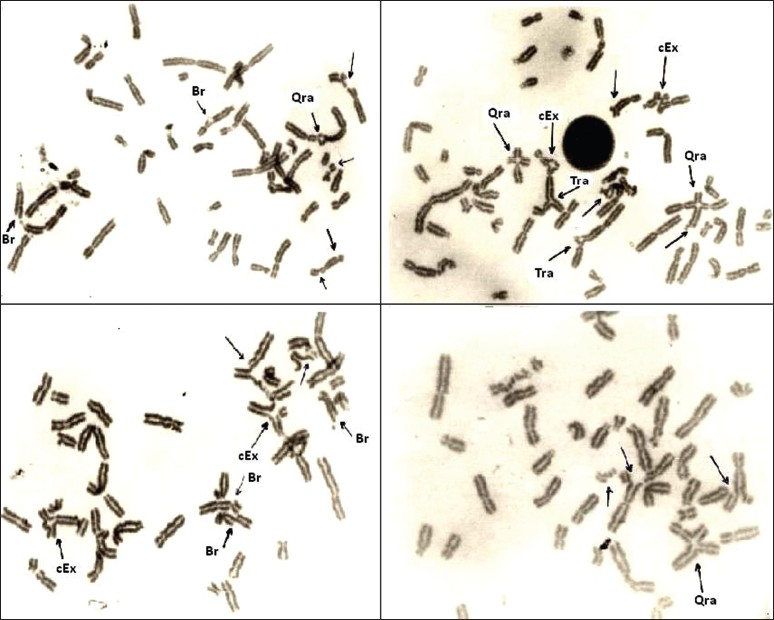  |
Evaluation of concentration and storage effects of mitomycin C in the diagnosis of Fanconi anemia among idiopatic aplastic anemia patients |
p. 145 |
H Mozdarani, K Abed Ashtiani, A Mohseni-Meybodi
DOI:10.4103/0971-6866.92088 PMID:22345984Background: Fanconi anemia (FA) is a rare autosomal recessive genetic disorder that shows an increased sensitivity to the intercalating agents such as mytomycin C (MMC), measured as chromosomal aberrations. This study was conducted to differentiate between FA and "idiopathic" aplastic anemia on the basis of induced chromosomal breakage study with MMC.
Materials and Methods: MMC stress tests in different final concentrations of 20 and 50 ng/ml of MMC were conducted on peripheral blood lymphocytes from 32 patients with aplastic anemia and 13 healthy controls. Fifty nanograms per milliliter of MMC from old, fresh and frozen stocks was used to check the sensitivity of diagnosis on FA-diagnosed patients. Statistical analysis was used for the assessment of aberrations, including chromatid and chromosome breaks and exchanges.
Results: Eight patients (25%) with a very high percentage of chromosomal breakage were diagnosed as FA on the basis of the chromosomal breakage study. Six of these patients exhibited congenital anomalies at presentation, while another two lacked such anomalies or had minor physical problems. Freshly made MMC has shown more sensitivity to detect FA patients compared with frozen or 1-week-old MMC stock.
Conclusions: The study indicates that freshly made MMC stress test provides an unequivocal means of differentiation between FA and "idiopathic" aplastic anemia. Further, the study, the first of its kind from Iran, stresses on the need for conducting this test in all aplastic anemia cases, even those without congenital anomalies, for accurate and timely diagnosis of FA to implement appropriate therapy. |
| [ABSTRACT] [HTML Full text] [PDF] [Mobile Full text] [EPub] [PubMed] [Sword Plugin for Repository]Beta |
|
|
|
|
|
|
A six-nucleotide deletion polymorphism in the casp8 promoter is associated with reduced risk of esophageal and gastric cancers in Kashmir valley |
p. 152 |
Manzoor Ahmad Malik, Showkat Ali Zargar, Balraj Mittal
DOI:10.4103/0971-6866.92090 PMID:22345985Background: Caspase-8 (CASP8) is a key regulator of apoptosis or programmed cell death, an essential defense mechanism against hyperproliferation and malignancy. To evaluate the role of CASP8 polymorphisms in esophageal (EC) and gastric cancers (GC) in the Kashmir valley, we examined the risk due to -652 6N ins/del polymorphism (rs3834129) in the promoter of CASP8 in a case-control study.
Materials and Methods: Genotypes of the CASP8 polymorphisms (-652 6N ins/del; rs3834129) were determined for 315 patients (135 EC and 108 GC) and 195 healthy controls by polymerase chain reaction. Data was statistically analyzed using Chi-square test and logistic regression model by using the SPSS software.
Results: Carriers for the "del" allele of rs3834129 single nucleotide polymorphism were associated with decreased risk for both EC (odds ratio [OR] = 0.278; 95% confidence interval [95% CI] = 0.090-0.853; P = 0.025) and GC (OR = 0.397; 95% CI = 0.164-0.962; P = 0.041). Also, in a recessive model, our results showed that CASP8 -652 6N ins/del "del/del" allele was conferring significant low risk for both EC (OR = 0.380; 95% CI = 0.161-0.896; P = 0.027) and GC (OR = 0.293; 95% CI = 0.098-0.879; P = 0.029). However, interaction of CASP8 -652 6N ins/del genotypes with smoking and high consumption of salted tea did not further modulate the risk of EC and GC.
Conclusions: Polymorphism in CASP8 -652 6N ins/del polymorphism modulates the risk of EC and GC in Kashmir valley. |
| [ABSTRACT] [HTML Full text] [PDF] [Mobile Full text] [EPub] [PubMed] [Sword Plugin for Repository]Beta |
|
|
|
|
|
|
Cytogenetic and comorbidity profile of Down syndrome in Mansoura University Children's Hospital, Egypt |
p. 157 |
Abdel-Hady El-Gilany, Sohier Yahia, Mohamed Shoker, Faeza El-Dahtory
DOI:10.4103/0971-6866.92092 PMID:22345986Background: Down syndrome (DS) is the most common chromosomal disorder. It has three chromosomal patterns.
Aim: To determine the cytogenetic and comorbidity profiles of DS in the Genetic Unit of Mansoura University Children's Hospital, Mansoura, Egypt.
Materials and Methods: A retrospective analysis was performed on the case records of 712 cytogenetically diagnosed cases of DS at the Genetic Unit of Mansoura University Children's Hospital, Egypt, during a 10-year period.
Results: About 19% of the cases had one or more cardiac anomalies and about 8% were hypothyroid. Nondisjunction was the most common type of abnormality, followed by translocation and lastly mosaic: 96.1, 3.1, and 0.8%, respectively. Hypothyroidism was significantly more common in translocation and mosaic karyotypes than in the nondisjunction karyotypes. First and second birth orders were significantly higher in the translocation and mosaic groups than in the nondisjunction group. Mothers are significantly older at the index pregnancy in the nondisjunction group than in the other two groups. We compared our findings with those of previous studies.
Conclusion: Knowing karyotype of DS will help in genetic counseling of the parents. Wide-scale national community-based survey with DS registry could help in estimating the size of the problem. |
| [ABSTRACT] [HTML Full text] [PDF] [Mobile Full text] [EPub] [Citations (3) ] [PubMed] [Sword Plugin for Repository]Beta |
|
|
|
|
|
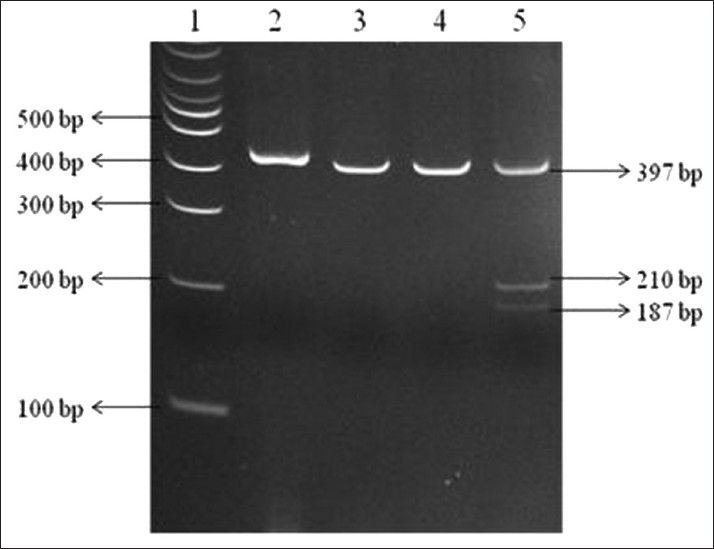  |
Genetic analysis of OCT1 gene polymorphisms in an Indian population |
p. 164 |
Gurusamy Umamaheswaran, Ramakrishnan G Praveen, Annan S Arunkumar, Ashok K Das, Deepak G Shewade, Chandrasekaran Adithan
DOI:10.4103/0971-6866.92094 PMID:22345987Background: Genetic variants of the organic cation transporter (OCT1) gene could influence interindividual variation in clinical response to metformin therapy. The genetic basis for the single-nucleotide polymorphism (SNP) of OCT1 gene has been established in other populations, but it remains to be elucidated in the Indian population. This study is focused on OCT1 gene variants rs2282143 (P341L, 1022C>T), rs628031 (M408V, 1222A>G) and rs622342 (1386C>A) frequency distributions in the South Indian Tamilian population.
Materials and Methods: A total of 112 unrelated healthy subjects of South Indian Tamilian origin, aged 18-60 years, of either sex were recruited for the study. Genotyping was determined using the quantitative real time-polymerase chain reaction and polymerase chain reaction followed by restriction fragment length polymorphism methods.
Results: Allele frequencies of rs2282143, rs628031and rs622342 polymorphisms were 8.9%, 80.3% and 24.5%, respectively. Interethnic differences in the genotype and allele frequencies of OCT1 gene polymorphism were observed when compared with other major populations. The SNPs rs2282143, T allele and rs628031, G allele were more common in Asians (5.5-16.8% and 76.2-81%) and African Americans (8.2% and 73.5%) than in Caucasians (0-2% and 57.4-60%).
Conclusion: This is the first time the frequency of OCT1 gene polymorphism was determined in the Indian population, and is similar to the frequencies observed in African-Americans and other Asian populations but different from those in Caucasians. The data observed in this study would justify further pharmacogenetic studies to potentially evaluate the role of OCT1 gene polymorphism in the therapeutic efficacy of metformin.
|
| [ABSTRACT] [HTML Full text] [PDF] [Mobile Full text] [EPub] [Citations (5) ] [PubMed] [Sword Plugin for Repository]Beta |
|
|
|
|
|
|
Haptoglobin polymorphism among the tribal groups of southern Gujarat |
p. 169 |
Priyanka Khurana, Aastha Aggarwal, Suraj Singh Huidrom, Gautam K Kshatriya
DOI:10.4103/0971-6866.92096 PMID:22345988Background : Gujarat is located at the western most point of the Indian subcontinent. Valsad and Surat districts are part of the 'tribal belt' of Gujarat and constitute 29.1% of total tribal population of Gujarat. These tribal populations are a rich source of gaining insights in the patterns of genetic diversity and genetico-environmental disorders against the back drop of their ecological, historical and ethnographic aspects.
Aim : The objectives were to find out a) the genetic diversity among the tribes of Gujarat with reference to haptoglobin (Hp) locus b) the relationship between Hp polymorphism and sickle cell anemia/trait.
Materials and Methods: 431 individuals belonging to eight tribal groups were studied for Hp polymorphism using polyacrylamide disc gel electrophoresis (PAGE). Hb*S was screened by dithionate tube turbididy (DTT) test and confirmed using cellulose acetate membrane electrophoresis (CAME).
Statistical Analysis: Allele frequency was calculated by direct gene counting method. Average heterozygosity and gene diversity were computed using software DISPAN. Analysis of molecular variance (AMOVA) was estimated using software ARLEQUIN version 3.1.
Results and Conclusions: Pattern of allele frequency distribution showed preponderance of Hp 2 allele in all the eight tribal groups, which is in accordance with its frequency in different populations of Indian subcontinent. Total average heterozygosity (H T ) was found to be low (0.160) but the level of genetic differentiation (G ST ) was found to be moderately high (5.6%). AMOVA analysis indicated least among group variance between west and south Indian populations (-0.04%) indicating the affinities of the tribes of Gujarat with that of Dravidian speaking groups. Analysis of Hp phenotypes among sickle cell anemia/ trait individuals revealed a high frequency of Hp 0-0 phenotype (92.7%) among SS individuals as opposed to only 9.7% among AS individuals, reaffirming the selective advantage of HbAS state in relation to hemolytic disorders. |
| [ABSTRACT] [HTML Full text] [PDF] [Mobile Full text] [EPub] [PubMed] [Sword Plugin for Repository]Beta |
|
|
|
|
|
|
Association of CYP3A5*3 polymorphism with development of acute leukemia |
p. 175 |
D Nageswara Rao, G Manjula, K Sailaja, D Surekha, D Raghunadharao, Senthil Rajappa, S Vishnupriya
DOI:10.4103/0971-6866.92098 PMID:22345989Background : CYP3A5 was observed to be an important genetic contributor to inter individual differences in CYP3A-dependent drug metabolism in acute leukemic patients. Loss of CYP3A5 expression was mainly conferred by a single nucleotide polymorphism at 6986A>G (CYP3A5*3). We investigated the association between CYP3A5*3 polymorphism and acute leukemia.
Materials and Methods : Two hundred and eighty nine acute leukemia cases comprising of 145 acute lymphocytic leukemia (ALL), 144 acute myeloid leukemia and 241 control samples were analyzed for CYP3A5*3 polymorphism using PCR-RFLP method. Statistical analysis was performed with SPSS version (15.0) to detect the association between CYP3A5*3 polymorphism and acute leukemia.
Results : The CYP3A5*3 polymorphism 3/3 genotype was significantly associated with acute leukemia development (χ2 - 133.53; df-2, P 0.000). When the data was analyzed with respect to clinical variables, mean WBC, blast % and LDH levels were increased in both ALL and AML cases with 3/3 genotype. The epidemiological variables did not contribute to the genotype risk to develop either AML or ALL.
Conclusion : The results suggest that the CYP3A5*3 polymorphism might confer the risk to develop ALL or AML emphasizing the significance of effective phase I detoxification in carcinogenesis. Association of the polymorphism with clinical variables indicate that the 3/3 genotype might also contribute to poorer survival of the patients. |
| [ABSTRACT] [HTML Full text] [PDF] [Mobile Full text] [EPub] [Citations (2) ] [PubMed] [Sword Plugin for Repository]Beta |
|
|
|
|
|
|
Evaluation of DNA damage in agricultural workers exposed to pesticides using single cell gel electrophoresis (comet) assay
|
p. 179 |
Raminderjeet Kaur, Satbir Kaur, Mukesh Lata
DOI:10.4103/0971-6866.92100 PMID:22345990Background : Pesticides are used in agriculture to protect crops, but they pose a potential risk to farmers and environment. The aim of the present study is to investigate the relation between the occupational exposure to various pesticides and the presence of DNA damage.
Materials and Methods : Blood samples of 210 exposed workers (after a day of intense spraying) and 50 control subjects belonging to various districts of Punjab (India) were evaluated using Comet assay. Sixty workers who showed DNA damage were selected for follow up at 5-6 months after the first sampling during a low or null spraying period.
Results : Significant differences were found in DNA damage between freshly exposed workers and controls and freshly exposed and followed up cases. There was significant increase in the comet parameters viz. mean comet tail length and frequency of cells showing migration in exposed workers as compared to controls (72.22 ± 20.76 vs. 46.92 ± 8.17, P<0.001; 31.79 vs. 5.77, P<0.001). In the second samples, followed up cases showed significant decrease in frequency of damaged cells as compared to freshly exposed workers of first sampling (P<0.05). The confounding factors such as variable duration of pesticide exposure, age, smoking, drinking and dietary habits etc which were expected to modulate the damage, were instead found to have no significant effect on DNA fragmentation.
Conclusion : The evidence of a genetic hazard related to exposure resulting from the intensive use of pesticides stresses the need for educational programs for agricultural workers to reduce the use of chemicals in agriculture. |
| [ABSTRACT] [HTML Full text] [PDF] [Mobile Full text] [EPub] [Citations (5) ] [PubMed] [Sword Plugin for Repository]Beta |
|
|
|
|
|
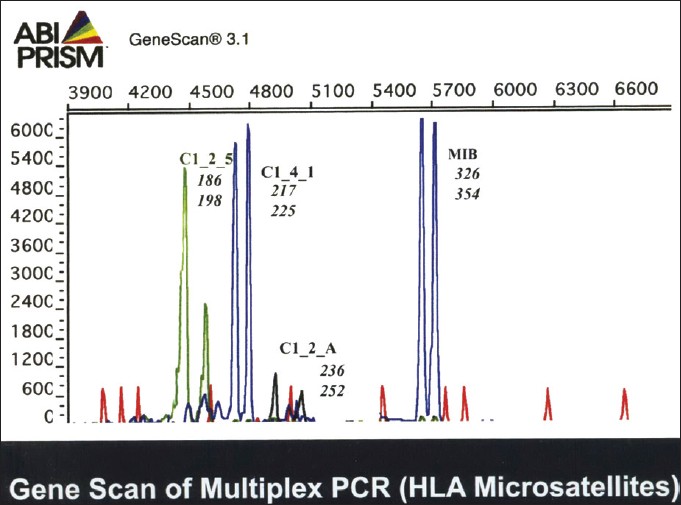  |
Tracing disease gene(s) in non-syndromic clefts of orofacial region: HLA haplotypic linkage by analyzing the microsatellite markers: MIB, C1_2_5, C1_4_1, and C1_2_A |
p. 188 |
R Rajendran, Saleem F Shaikh, Sukumaran Anil
DOI:10.4103/0971-6866.92101 PMID:22345991Background : Cleft lip with or without cleft palate (CL/P) is the most frequent craniofacial malformation seen in man. The etiology of CL/P is complex involving both genetic and epigenetic (environmental) factors, and the genes play an almost deterministic role in the normal development of craniofacial structures. This study was aimed at ascertaining the association of HLA microsatellites in CL/P patients.
Materials and Methods : Case DNA was obtained from 76 patients (40M and 36 F, average age 7.8 years, range 1-16 years). Unaffected individuals from the same geographical area without population mixing included as controls (n=154, 76 M and 78 F, average age 8.2 years, range 2-17 years). All DNA samples were purified from peripheral blood by standard techniques.
Results :0 Four microsatellites were compared in this case-control study. C1_2_5 locus was the most polymorphic marker with 15 observed alleles while C1_4_1 had the least number of alleles. Three of the four markers viz MIB,C1_4_1 and C1_2_5 showed a significant association of microsatellite alleles with CL/P. Five alleles (MIB_326,332,350; C1_4_1 - 213 and C1_2_5-204) were seen with an increased frequency among the test samples, whereas two alleles (C1-4_1_217, and C1_2_5_196) had an increased frequency among the control samples. One allele (C1-4-1-209) had an increased frequency in patient group but was not observed in the controls.
Conclusion : The role of HLA complex in the pathogenesis of CL/P is speculative and has not been established so far. The result of this study shows that a few alleles have an increased frequency of expression in the diseased group which suggests that these alleles may predispose the individuals to clefting. This finding may be beneficial to aid in early diagnosis and plan intervention strategies. |
| [ABSTRACT] [HTML Full text] [PDF] [Mobile Full text] [EPub] [PubMed] [Sword Plugin for Repository]Beta |
|
|
|
|
|
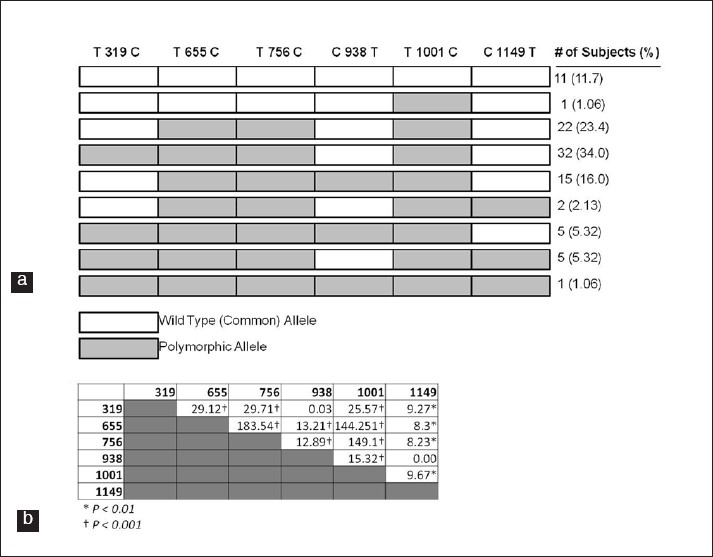  |
APOA1 gene polymorphisms in the South Asian immigrant population in the United States |
p. 194 |
Rebecca S Henkhaus, Sunita Dodani, Ann M Manzardo, Merlin G Butler
DOI:10.4103/0971-6866.92103 PMID:22345992Background : Coronary artery disease (CAD) is a leading cause of death in the United States. South Asian immigrants (SAIs) from the Indian subcontinent living in the US are disproportionately at higher risk of CAD than other immigrant populations. Unique genetic factors may predispose SAIs to increased risk of developing CAD when adopting a Western lifestyle including a higher-fat diet, more sedentary behavior and additional gene-environment interactions. SAIs are known to have low levels of the protective high density lipoprotein (HDL) and an altered function for Apo-lipoprotein A-1 (ApoA1), the main protein component of HDL cholesterol. One gene that may be genetically distinctive in this population is APOA1 which codes for ApoA-1 protein, a potentially important contributing factor in the development of CAD.
Materials and Methods : DNA sequencing was performed to determine the status of the seven single-nucleotide polymorphisms (SNPs) in the APOA1 gene from 94 unrelated SAI adults. Genotypes, allelic frequencies, and intragenic linkage disequilibrium of the APOA1 SNPs were calculated.
Results : Several polymorphisms and patterns were common among persons of south Asian ethnicity. Frequencies for SNPs T655C, T756C and T1001C were found to be different than those reported in European Caucasian individuals. Linkage disequilibrium was found to be present between most (13 of 15) SNP pairings indicating common inheritance patterns.
Conclusions : SAIs showed variability in the sequence of the APOA1 gene and linkage disequilibrium for most SNPS. This pattern of APOA1 SNPs may contribute to decreased levels of HDL cholesterol reported in SAIs, leading to an increased risk for developing CAD in this population. |
| [ABSTRACT] [HTML Full text] [PDF] [Mobile Full text] [EPub] [Citations (1) ] [PubMed] [Sword Plugin for Repository]Beta |
|
|
|
|
|
|
Risk conferred by FokI polymorphism of vitamin D receptor (VDR) gene for essential hypertension |
p. 201 |
N Swapna, U Mohana Vamsi, G Usha, T Padma
DOI:10.4103/0971-6866.92104 PMID:22345993Background : The vitamin D receptor (VDR) gene serves as a good candidate gene for susceptibility to several diseases. The gene has a critical role in regulating the renin-angiotensin system (RAS) influencing the regulation of blood pressure. Hence determining the association of VDR polymorphisms with essential hypertension is expected to help in the evaluation of risk for the condition.
Aim : The aim of this study was to evaluate association between VDR Fok I polymorphism and genetic susceptibility to essential hypertension.
Materials and Methods : Two hundred and eighty clinically diagnosed hypertensive patients and 200 normotensive healthy controls were analyzed for Fok I (T/C) [rs2228570] polymorphism by polymerase chain reaction and restriction fragment length polymorphism (PCR-RFLP) analysis. Genotype distribution and allele frequencies in patients and controls, and odds ratios (ORs) were calculated to predict the risk for developing hypertension by the individuals of different genotypes.
Results : The genotype distribution and allele frequencies of Fok I (T/C) [rs2228570] VDR polymorphism differed significantly between patients and controls (χ2 of 18.0; 2 degrees of freedom; P = 0.000). FF genotype and allele F were at significantly greater risk for developing hypertension and the risk was elevated for both the sexes, cases with positive family history and habit of smoking.
Conclusions : Our data suggest that VDR gene Fok I polymorphism is associated with the risk of developing essential hypertension |
| [ABSTRACT] [HTML Full text] [PDF] [Mobile Full text] [EPub] [Citations (12) ] [PubMed] [Sword Plugin for Repository]Beta |
|
|
|
|
|
|
A comparative study of hematological parameters of α and β thalassemias in a high prevalence zone: Saudi Arabia |
p. 207 |
Syed Riaz Mehdi, Badr Abdullah Al Dahmash
DOI:10.4103/0971-6866.92106 PMID:22345994Background and Aims : Saudi Arabia falls in the high prevalent zone of αα and β thalassemias. Early screening for the type of thalassemia is essential for further investigations and management. The study was carried out to differentiate the type of thalassemia based on red cell indices and other hematological parameters.
Materials and Methods : The study was carried out on 991 clinically suspected cases of thalassemias in Riyadh, Saudi Arabia. The hematological parameters were studied on Coulter STKS. Cellulose acetate hemoglobin electrophoresis and high-performance liquid chromatography (HPLC) were performed on all the blood samples. Gene deletion studies were carried out by restriction fragment length polymorphism (RFLP) technique using the restriction endonucleases Bam HI.
Statistical Analysis : Statistical analysis was performed on SPSS 11.5 version.
Results : The hemoglobin electrophoresis and gene studies revealed that there were 406 (40.96%) and 59 (5.95 %) cases of β thalassemia trait and β thalassemia major respectively including adults and children. 426 cases of various deletion forms of α thalassemias were seen. Microcytosis was a common feature in β thalassemias trait and (-α/-α) and (--/αα) types of α thalassemias. MCH was a more significant distinguishing feature among thalassemias. β thalassemia major and α thalassemia (-α/αα) had almost normal hematological parameters.
Conclusion : MCV and RBC counts are not statistically significant features for discriminating between α and β thalassemias. There is need for development of a discrimination index to differentiate between α and β thalassemias traits on the lines of discriminatory Indices available for distinguishing β thalassemias trait from iron deficiency anemia. |
| [ABSTRACT] [HTML Full text] [PDF] [Mobile Full text] [EPub] [Citations (3) ] [PubMed] [Sword Plugin for Repository]Beta |
|
|
|
|
|
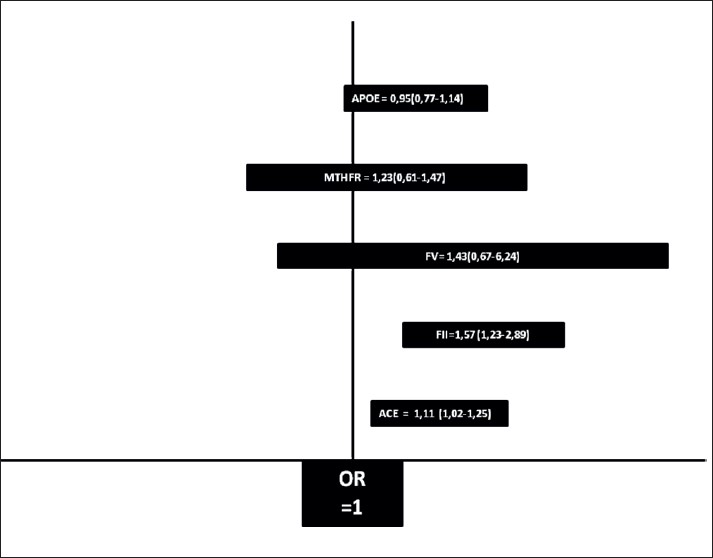  |
Large-scale meta-analysis of genetic studies in ischemic stroke: Five genes involving 152,797 individuals |
p. 212 |
Khalil Hamzi, Amal Tazzite, Sellama Nadifi
DOI:10.4103/0971-6866.92105 PMID:22345995Background: Ischemic stroke descent has a genetic basis. Stroke represents a complex trait, which is assumed to be polygenic. On this topic, the role of a wide number of candidate genes has been investigated in stroke through association studies.
Materials and Methods: We performed a literature-based systematic review of genetic association studies in stroke abound several populations. Odds ratios (ORs) and 95% confidence intervals (CIs) were determined for each gene-disease association. Following a review of 300 manuscripts, five candidate gene variants were analyzed among 152,797 individuals (45,433 cases and 107,364 controls).
Results: For these five candidate genes studied, the prothrombin OR is 1,57 (1,23-2,89), the factor V Leiden OR is 1,43 (0,67-6,24), the mean OR of angiotensin I converting enzyme (ACE) insertion/deletion (I/D) polymorphism is 1,11 (1,02-1,25), the summary OR for the C677T variant of 5,10-methylenetetrahydrofolate reductase (MTHFR) is 1,23 (0,61-1,47) and the pooled OR for the apolipoprotein E (APOE) gene is 0,95 (0,77-1,14) .
Conclusion: These data suggest the genetic associations of some genes with ischemic stroke and it is necessary to compete with other genes. Our findings could represent an epidemiological base and a useful tool to address further molecular investigations and to realize more detailed meta-analyses. |
| [ABSTRACT] [HTML Full text] [PDF] [Mobile Full text] [EPub] [Citations (10) ] [PubMed] [Sword Plugin for Repository]Beta |
|
|
|
|
|
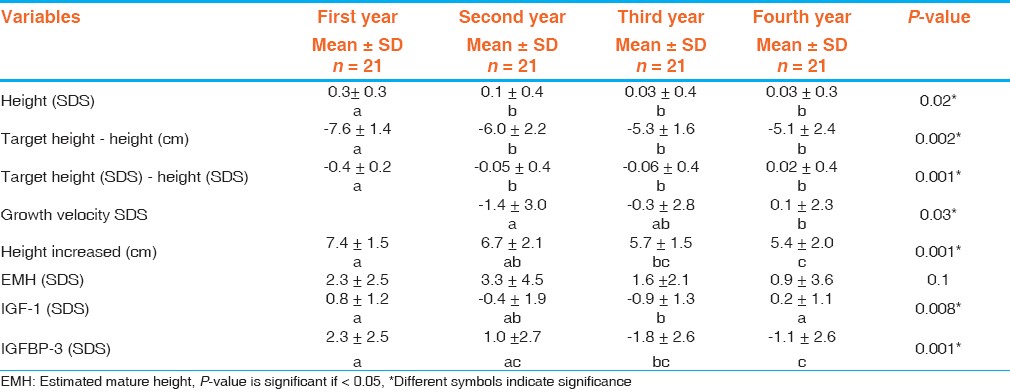  |
Growth response of Egyptian children with idiopathic short stature during four years of growth hormone therapy |
p. 218 |
Nagwa Abdallah Ismail, Nermeen Salah Eldin Metwaly, Fatma Ahmed El-Moguy, Mona Hassan Hafez, Soha M Abd El Dayem, Tarek Mohamed Farid
DOI:10.4103/0971-6866.92102 PMID:22345996Background: Multiple factors affect the growth response to recombinant human growth hormone (rhGH) in children with idiopathic short stature (ISS).
Aim: To evaluate the growth responses of children with ISS treated with rhGH, aiming to identify the predictors of growth response.
Materials and Methods: We studied 120 cases, 90 males (75%), with a mean age of 13.8±2.7 years and 30 females (25%), with a mean age of 12.3±2.5 years. All patients received rhGH with a standard dose of 20 IU /m2 /week. The calculated dose per week was divided into six days and given subcutaneous at night.
Results: A significant positive trend was detected in the delta changes of all anthropometric data. For the first year, the growth response was positively correlated to CA and BA delay and negatively correlated to height, weight and IGF-1 SDSs. For the second year, the growth response was correlated positively to first year growth velocity, BA, triceps skin fold thickness SDS and deviation from target height, and negatively correlated to weight, IGFBP3 SDS and target height SDS. For the third year, the growth response was positively correlated to five variables namely target height, 2nd year growth velocity, IGF-1 SDS, weight SDS and triceps skin fold thickness SDS. For the fourth year, growth response was positively correlated to 2nd and 3rd year growth velocity, BA, deviation from target height and weight/ height SDS.
Conclusion: Our study showed multiplicity of predictors that is responsible for response in ISS children treated with rhGH, and BA was an important predictor. |
| [ABSTRACT] [HTML Full text] [PDF] [Mobile Full text] [EPub] [PubMed] [Sword Plugin for Repository]Beta |
|
|
|
|
|
|
| CASE REPORTS |
 |
|
|
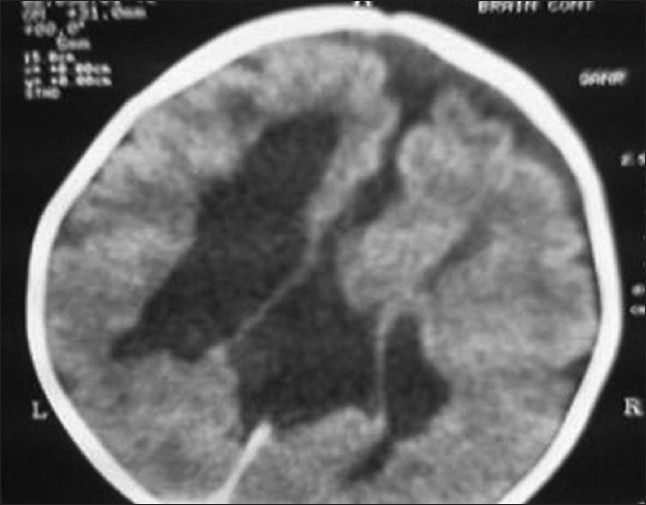  |
Refractory seizures with global developmental delay: A rare cause |
p. 226 |
PN Vinoth, Betty Chacko, J Julius Xavier Scott, Venkatasai
DOI:10.4103/0971-6866.92099 PMID:22345997Aicardi syndrome is a genetic disorder characterized by the triad of infantile spasm in flexion, callosal agenesis and ocular abnormalities (chorioretinal lacunae, coloboma of optic disc). We report a typical case of Aicardi syndrome with all the classical features. |
| [ABSTRACT] [HTML Full text] [PDF] [Mobile Full text] [EPub] [PubMed] [Sword Plugin for Repository]Beta |
|
|
|
|
|
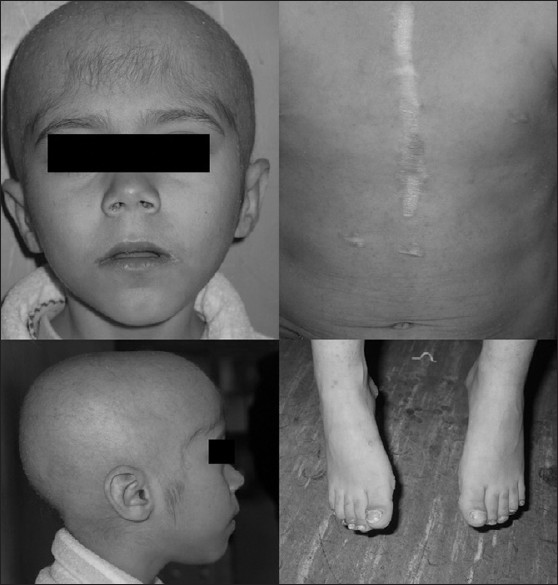  |
Ross operation in a neuro-cardio-facial-cutaneous syndrome patient |
p. 229 |
Keyhan S Zanjani, Ali Akbar Zeinaloo, Hassan Radmehr
DOI:10.4103/0971-6866.92097 PMID:22345998Congenital heart diseases are a major part of Costello and cardio-facio-cutaneous syndromes. Subaortic stenosis was reported rarely and Ross operation never in these syndromes.
We reported a girl patient whose manifestations were consistent with these syndromes. Distinction between these syndromes was not possible as genetic testing was not carried out. She developed severe neoaortic regurgitation 2.5 years after the Ross operation and died due to the complications of aortic valve replacement.
Ross operation may be an unsuitable option in these syndromes due to the possibility of subtle pulmonic valve pathology. |
| [ABSTRACT] [HTML Full text] [PDF] [Mobile Full text] [EPub] [PubMed] [Sword Plugin for Repository]Beta |
|
|
|
|
|
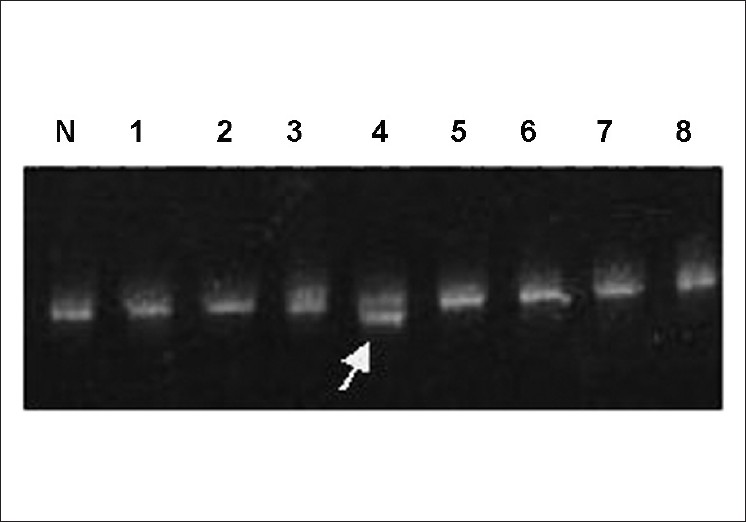  |
A novel mutation (4040-4045 nt. delA) in exon 14 of the factor VIII gene causing severe hemophilia A |
p. 232 |
Habib Onsori, Mohammad Ali Hosseinpour Feizi, Abbas Ali Hosseinpour Feizi
DOI:10.4103/0971-6866.92095 PMID:22345999Hemophilia A is an X-linked congenital bleeding disorder caused by Factor VIII deficiency. Different mutations including point mutations, deletions, insertions and inversions have been reported in the FVIII gene, which cause hemophilia A. In the current study, with the use of conformational sensitive gel electrophoresis (CSGE) analysis, we report a novel 1-nt deletion in the A6 sequence at codons 1328-1330 (4040-4045 nt delA) occurring in exon 14 of the FVIII gene in a seven-year-old Iranian boy with severe hemophilia A. This mutation that causes frameshift and premature stop-codon at 1331 has not previously been reported in the F8 Hemophilia A Mutation, Structure, Test and Resource Site (HAMSTeRS) database. |
| [ABSTRACT] [HTML Full text] [PDF] [Mobile Full text] [EPub] [Citations (1) ] [PubMed] [Sword Plugin for Repository]Beta |
|
|
|
|
|
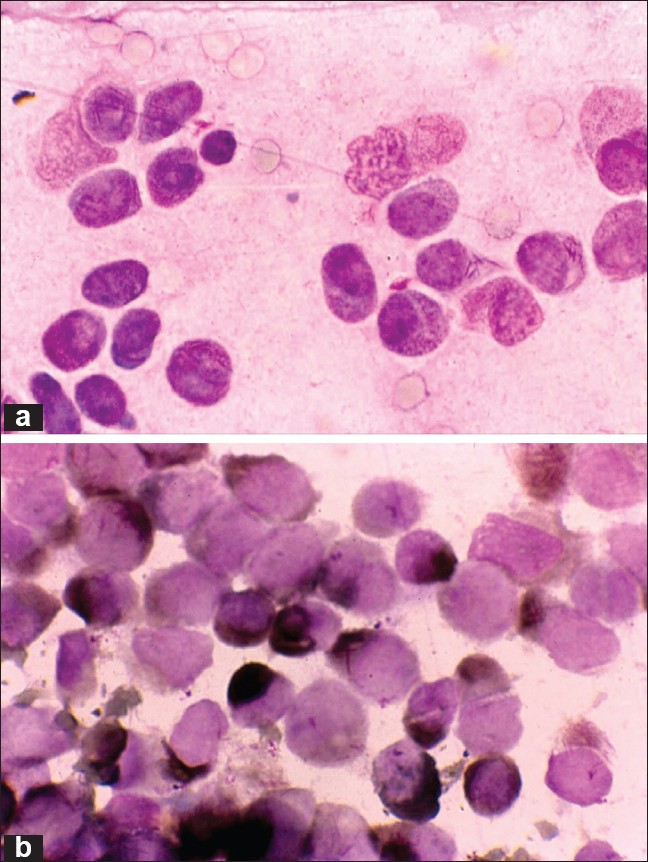  |
Acute promyelocytic leukemia with unusual karyotype |
p. 235 |
Mangala Gowri, SK Kousar Jahan, Kavitha , Prasannakumari , Madhumathi , L Appaji
DOI:10.4103/0971-6866.92093 PMID:22346000Acute myeloid leukemia (AML-M3) is associated with the translocation t(15;17)(q22;q12-21) which disrupts the retinoic acid receptor alpha (RARA) gene on chromosome 17 and the PML gene on chromosome 15. We report a two-year-old patient with AML-M3 without the usual translocation t(15;17). Cytogenetic studies demonstrated normal appearance of chromosome 15 while the abnormal 17 homologue was apparently a derivative 17, der(17)(17qter-cen-q21:), the rearrangement distinctly shows deletion at 17q21 band and the morphology corresponding to an iso chromosome i(17q-). This case report is a rare cytogenetic presentation of acute promyelocytic leukemia (APML). |
| [ABSTRACT] [HTML Full text] [PDF] [Mobile Full text] [EPub] [Citations (1) ] [PubMed] [Sword Plugin for Repository]Beta |
|
|
|
|
|
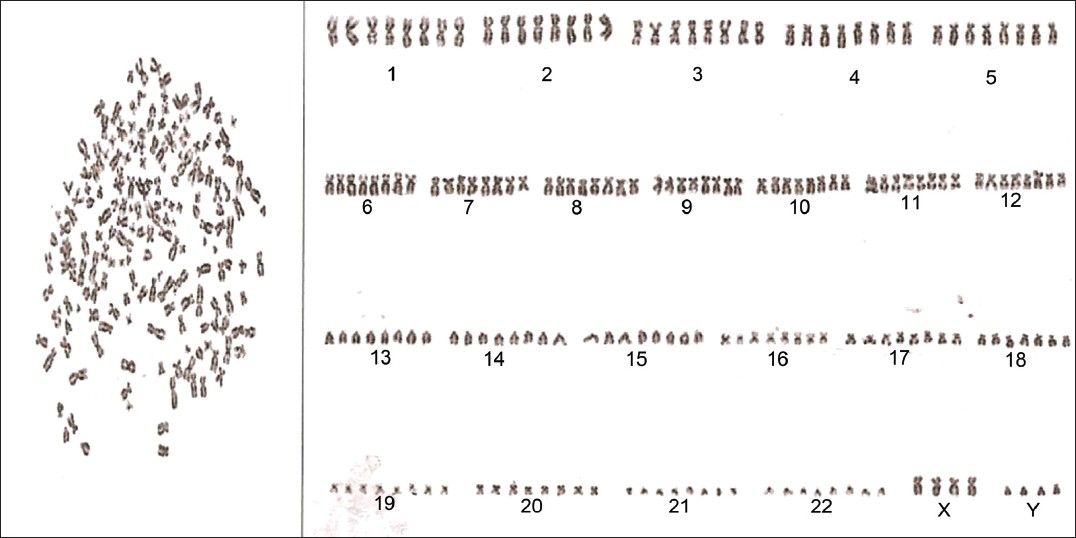  |
Octaploidy in idiopathic thrombocytopenic purpura |
p. 238 |
RN Makroo, Mohit Chowdhry, Manoj Mishra, Priyanka Srivastava, Ashish Fauzdar
DOI:10.4103/0971-6866.92091 PMID:22346001We report a case of an elderly 68-year-old male who presented in our hospital with chief complaints of petechial rashes and ecchymosis over extremities and bleeding from the oral cavity since 3-4 days prior to hospitalization. He saw a physician before coming to our hospital and received one dose of IV methylprednisolone and oral wysolone. He had come to our hospital for further management. Bone marrow karyotyping was done and chromosomal analysis revealed two cell lines. Eighty percent of the cells analyzed revealed apparently normal male karyotype. However, 20% cells analyzed revealed a total of 184 chromosomes, suggesting octaploidy. |
| [ABSTRACT] [HTML Full text] [PDF] [Mobile Full text] [EPub] [Citations (1) ] [PubMed] [Sword Plugin for Repository]Beta |
|
|
|
|
|
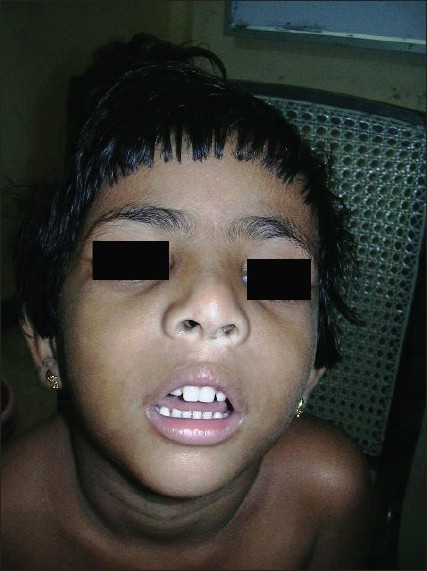  |
Isochromosome X mosaicism in a child with Kabuki syndrome phenotype: A rare cytogenetic association |
p. 241 |
Jeevan M Kumar, Kalpana Gowrishankar, T Vasanthi, R Ashok Kumar, T Jayasudha
DOI:10.4103/0971-6866.92089 PMID:22346002Isochromosome is a structurally unbalanced chromosome consisting of two short arms or two long arms, which are derived by abnormal centromere division or sister-chromatid exchange. Most autosomal isochromosomes are unusual, while those involving sex chromosomes are common. Kabuki syndrome (KS, OMIM 147920) is a multiple malformation/mental retardation syndrome of unknown etiology. A conventional cytogenetic study on lymphocytes from a 4-year-old girl with physical features suggestive of KS was found to have mosaicism for isochromosome for the long arm of the X. Although most manifestations present in this patient have been described before, this report is a rare association of clinical and cytogenetic findings in this syndrome. A genome-wide analysis and a larger number of patient groups studied could improve our understanding of the genetic basis of KS. |
| [ABSTRACT] [HTML Full text] [PDF] [Mobile Full text] [EPub] [Citations (3) ] [PubMed] [Sword Plugin for Repository]Beta |
|
|
|
|
|
|
| LETTERS TO THE EDITOR |
 |
|
|
|
NQO1 C 609 T polymorphisms analyzed in a population from Kolkata, West Bengal |
p. 244 |
Sanjit Mukherjee, Keya Chaudhuri
DOI:10.4103/0971-6866.92083 PMID:22346003 |
| [HTML Full text] [PDF] [Mobile Full text] [EPub] [PubMed] [Sword Plugin for Repository]Beta |
|
|
|
|
|
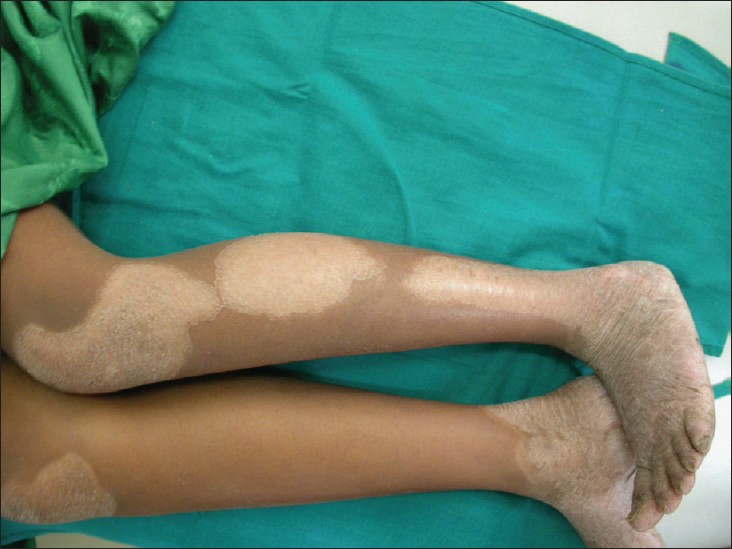  |
Hay-Wells syndrome of ectodermal dysplasia: A rare autosomal dominant disorder |
p. 245 |
NB Nagaveni, KV Umashankara
DOI:10.4103/0971-6866.92084 PMID:22346004 |
| [HTML Full text] [PDF] [Mobile Full text] [EPub] [PubMed] [Sword Plugin for Repository]Beta |
|
|
|
|
|
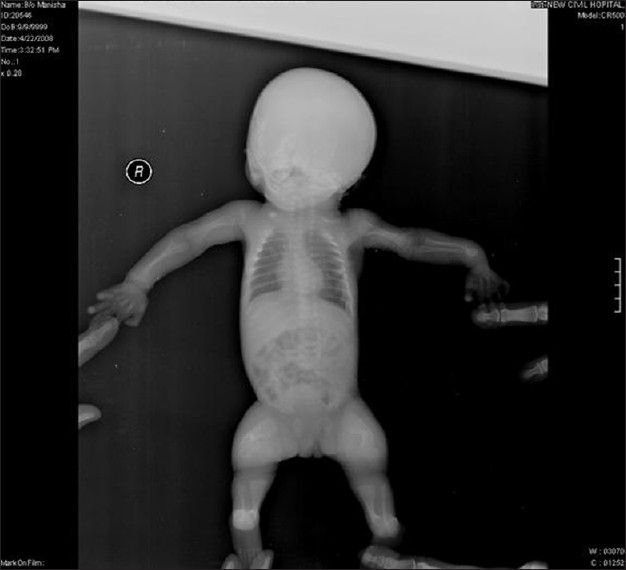  |
Campomelic dysplasia |
p. 247 |
Jagdish P Goyal, Anshul Gupta, Vijay B Shah
DOI:10.4103/0971-6866.92085 PMID:22346005 |
| [HTML Full text] [PDF] [Mobile Full text] [EPub] [PubMed] [Sword Plugin for Repository]Beta |
|
|
|
|
|
|
Null effect of p53 codon 72 polymorphism on recurrent pregnancy loss and recurrent implantation failure: A summative assessment |
p. 248 |
Viroj Wiwanitkit
DOI:10.4103/0971-6866.92086 PMID:22346006 |
| [HTML Full text] [PDF] [Mobile Full text] [EPub] [PubMed] [Sword Plugin for Repository]Beta |
|
|
|
|
|






